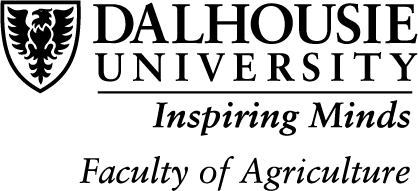This blog post will be followed by subsequent posts, where we will elaborate on topics introduced in this post, as well as other topics, in our attempt to provide an overview of online course development.
It’s true, this summer will be like no other. Never before have so many instructors on our campus endeavoured to prepare their coming fall semester courses for delivery online. Although this is new territory for many, the tasks ahead are far from impossible, and Brian, Sondra, and their summer assistants are ready to help guide you along the way.
What will matter the most in the months ahead is understanding what is required to design, develop and deliver online learning at a high quality. Allow your experience in teaching a course face to face to provide some comfort but embrace the unfamiliar as well. The ETD Unit will work with you to formulate a strategy for the online design, development, and delivery of your course, carefully ensuring a strong alignment between your learning outcomes, communication, assessments, and instructional materials.
Learning Outcomes
The learning outcomes will help pave the way for choosing appropriate assessments and in identifying the overall strategy for developing a course for online. The learning outcomes for an online version of your course should be the same as the in-person version, however your instructional methods may change in the online environment.
This link provides a good general overview of things to think about when moving online: https://www.chronicle.com/interactives/advice-online-teaching
This link discusses how to keep students front and centre while envisioning your move to online delivery: https://er.educause.edu/blogs/2020/4/student-centered-remote-teaching-lessons-learned-from-online-education
This link from Dalhousie’s Centre for Learning & Teaching (CLT) discusses aligning learning outcomes during online course design: https://qualityguidelines.elearning.dal.ca/course-design-learning-outcomes
Communication
In the online environment, communication is key. The absence of a physical environment in which you share space with your students will drastically change how you interact with them. Even if you arrange synchronous meetings, assignment instructions and due dates will all need to be written out and easily located. Communication with your students includes providing ways for students to ask questions, providing feedback, and building a community within the course. There are a number of communication tools that are built into, or integrated with, Brightspace. We will work with you to help design an environment that fosters communication and connectedness.
This link from Dalhousie’s CLT discusses how and when to interact online, and how to ensure instructor presence: https://qualityguidelines.elearning.dal.ca/interaction
This article from Dalhousie’s CLT discusses tips for building an online community: https://focus.clt.dal.ca/blog/creating-a-virtual-learning-community
Assessments
Online assessments should always be directly connected to the course learning outcomes. In other words, the assessments will provide assurance that students have learned what you have stated they should learn by the end of the course. In the online environment, it’s crucial that your assessments are varied, that the learner expectations are well-defined, that the grading criteria is clear, and that you will provide timely feedback. The choice of assessment will also be driven by the availability of the technology and tools, and in particular, how accessible these tools will be for your students.
This link from Dalhousie’s CLT discusses online assessment: https://qualityguidelines.elearning.dal.ca/assessment-evaluation
For those interested in more in-depth reading on the subject, this scholarly article discusses various online assessment options and the evidence behind each: https://olj.onlinelearningconsortium.org/index.php/olj/article/view/1712/544
Instructional Materials
The content or instructional materials that will comprise the course will be determined upon the Learning Outcomes and establishing the Assessments. What supporting content will enable students to meet the intended outcomes and complete the assessments and learning activities? It’s very tempting to provide extraneous information, but by continually ensuring the close alignment of the core elements of a well-designed course, you will be better able to determine what content is essential. You may include supplemental resources but be sure to mark them as optional.
Determine the kind of instructional materials that will best suit your learners, as well as the learning experience you want your students to have. Often, it is a variety of materials and methods, and which you choose should be based on the accessibility (social inequalities, internet or technical access issues, or physical limitations) of that delivery mode.
The instructional materials you decide to use can be a mixture of material that you create yourself (text content, video lectures, etc.), and links out to resources elsewhere on the web. In either case, the instructional materials chosen should meet accessibility standards and the ETD office will help you with this.
This link provides a list of sources of high quality Open Educational Resources (OER) that can searched and incorporated into your course for free: https://dal.ca.libguides.com/c.php?g=257259&p=1717419
Educational Technology and Design will use the blog as a regular stream to communicate with the campus. If you have any questions, please get in touch with Brian (brian.lesser@dal.ca) or Sondra (sondra.mantle@dal.ca).
